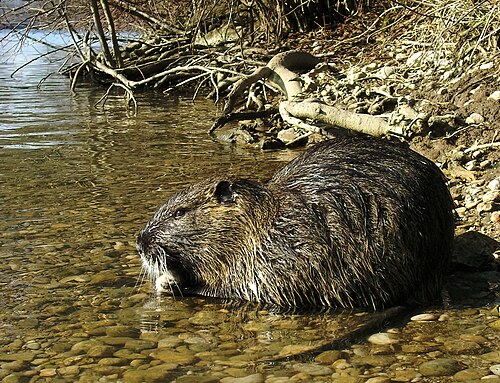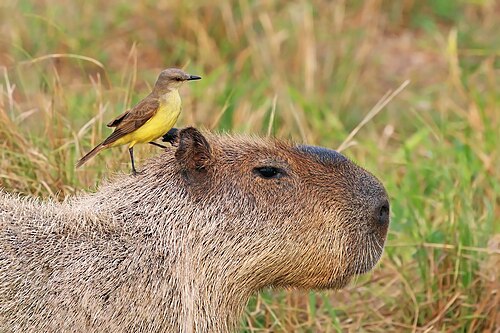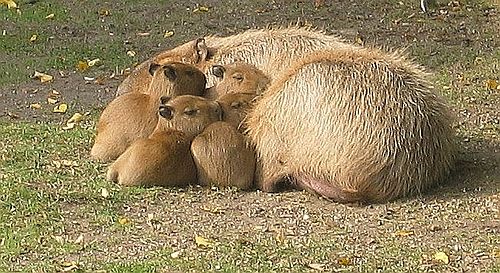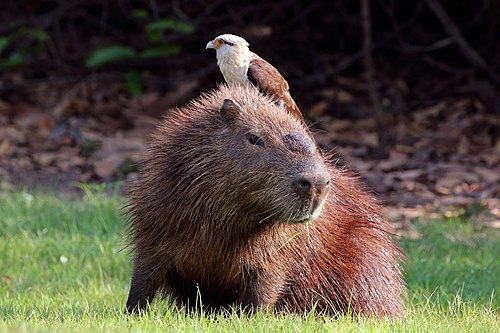Coypunoun
A large, crepuscular, semiaquatic rodent (Myocastor coypus) resembling a large rat, having bright orange-yellow incisors, native to South America and introduced to Europe, Asia and North America, valued for its fur in eastern Europe and central Asia and considered a pest elsewhere.
Coypunoun
A South American rodent (Myopotamus coypus), allied to the beaver. It produces a valuable fur called nutria.
Coypunoun
aquatic South American rodent resembling a small beaver; bred for its fur
Coypu
The coypu (from Spanish coipú, from Mapudungun koypu; Myocastor coypus), also known as the nutria, is a large, herbivorous, semiaquatic rodent. Classified for a long time as the only member of the family Myocastoridae, Myocastor is now included within Echimyidae, the family of the spiny rats.
Capybaranoun
A semi-aquatic South American rodent, Hydrochoerus hydrochaeris, the largest living rodent.
Capybaranoun
A large South American rodent (Hydrochærus capybara) Living on the margins of lakes and rivers. It is the largest extant rodent, being about three feet long, and half that in height. It somewhat resembles the Guinea pig, to which it is related; - called also cabiai and water hog.
Capybaranoun
pig-sized tailless South American amphibious rodent with partly webbed feet; largest living rodent
Capybaranoun
a South American mammal that resembles a giant long-legged guinea pig. It lives in groups near water and is the largest living rodent.
Capybara
The capybara (Hydrochoerus hydrochaeris) is a giant cavy rodent native to South America. It is the largest living rodent.



























